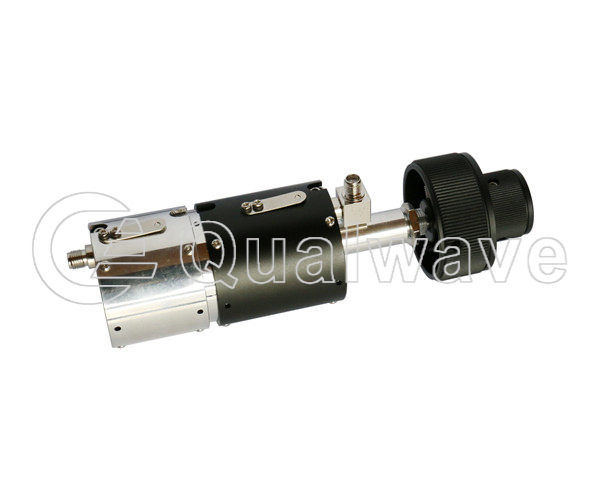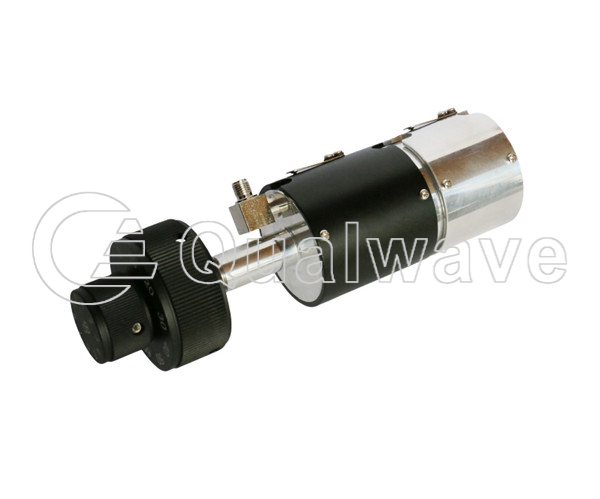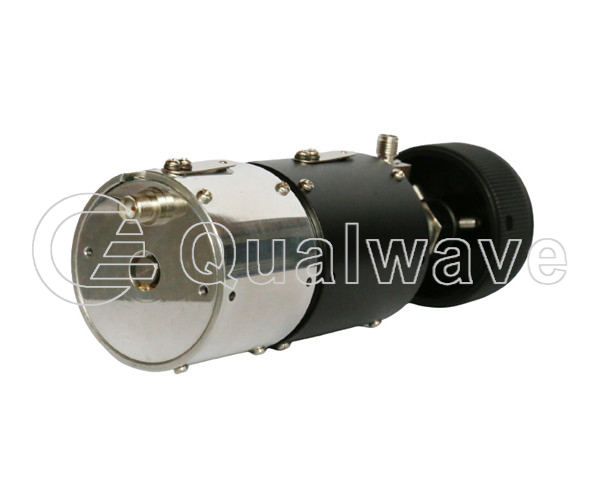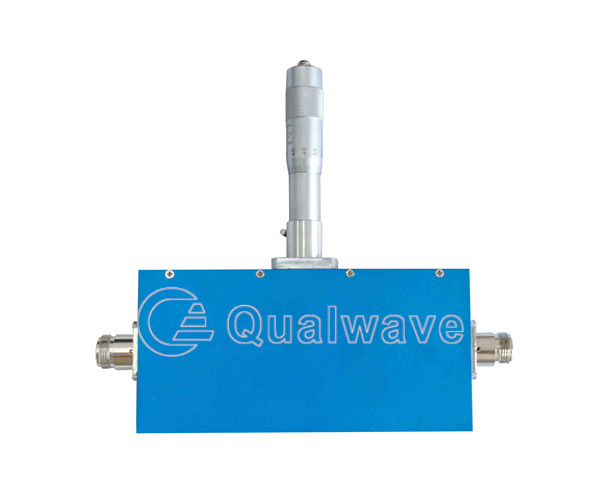Features:
- Low VSWR
- High Attenuation Flatness
 +86-28-6115-4929
+86-28-6115-4929  sales@qualwave.com
sales@qualwave.com




Rotary Stepped Attenuator and Continuously Variable Attenuator .
Rotary Stepped Attenuator is an electronic component used to control signal strength. Its main characteristic is that it has a fixed number of stepped attenuation, each step attenuation is equal, and the step accuracy is high, which can achieve very accurate signal attenuation.
Manual variable attenuators are electronic components that can continuously control signal strength. Its main feature is that it can achieve linear or nonlinear signal attenuation by rotating or changing voltage.
1. Step attenuation: Adjust the attenuation evenly each time.
2. High precision: Manual continuously variable attenuator can control signal strength within a very precise range.
3. Large total attenuation: Rotary step attenuator can reach or even exceed 90dB attenuation.
4. Low noise: Continuously variable attenuator considered a type of passive attenuator with relatively low noise.
1. Audio device: Rotary continuously variable attenuator used to adjust the size of the power amplifier signal output.
2. Communication equipment: Manually variable attenuator used to adjust the strength of signal reception to avoid damage to the equipment caused by excessively strong signals.
3. Measurement instrument: Manual control attenuator used to accurately adjust signal strength to meet testing requirements.
4. Microwave equipment: Rotary stepped atenuator used to adjust the size and intensity of microwave signals.
1. Continuously variable: The signal strength can be continuously controlled within the range.
2. High accuracy: Variable attenuator able to achieve very precise signal attenuation.
3. Fast response: The signal response speed is fast and can be quickly adjusted for attenuation.
1. Wireless communication: Continuously variable attenuator used to adjust the strength of signal reception to avoid damage to equipment caused by excessively strong signals.
2. Audio and video equipment: Variable attenuator used to adjust the size and strength of audio and video signals.
3. Instrument measurement: Rotary continuously variable attenuator used to accurately adjust signal strength to meet testing requirements.
4. Antenna reception: Used to adjust the signal strength received by the antenna to improve reception quality.
Qualwave supplies low VSWR and high attenuation flatness from DC to 40GHz. The attenuation range is 0~129dB, attenuation steps are 0.1dB, 1dB, 10dB. And the average power handling is up to 300 watts.


| Rotary Stepped Attenuators | |||||
|---|---|---|---|---|---|
| Part Number | Frequency (GHz) | Attenuation Range/Step (dB/dB) | Power (W) | Connectors | Lead Time (Weeks) |
| QSA06A | DC~6 | 0~1/0.1, 0~10/1, 0~60/10, 0~70/10, 0~90/10 | 2, 10 | SMA, N | 2~6 |
| QSA06B | DC~6 | 0~11/0.1, 0~50/1, 0~70/1, 0~100/1 | 2, 10 | SMA, N | 2~6 |
| QSA06C | DC~6 | 0~11/0.1, 0~70/1, 0~100/1 | 2, 10 | N | 2~6 |
| QSA06D | DC~6 | 0~71/0.1, 0~101/0.1, 0~95/1, 0~110/1, 0~121/1 | 2, 10 | N | 2~6 |
| QSA18A | DC~18 | 0~9/1, 0~70/10, 0~90/10 | 2, 10, 25 | SMA | 2~6 |
| QSA18B | DC~18 | 0~69/1, 0~99/1 | 2, 5 | SMA | 2~6 |
| QSA18C | DC~18 | 0~99.9/0.1, 0~109/1, 0~119/1, 0~129/1 | 2, 5 | N, SMA | 2~6 |
| QSA26A | DC~26.5 | 0~69/1, 0~99/1 | 2, 10 | 3.5mm, SMA, N | 2~6 |
| QSA26B | DC~26.5 | 0~9/1, 0~60/10, 0~70/10 | 2, 10, 25 | 3.5mm | 2~6 |
| QSA28A | DC~28 | 0~9/1, 0~60/10, 0~70/10, 0~90/10 | 2, 10, 25 | 3.5mm, SMA | 2~6 |
| QSA28B | DC~28 | 0~99/1, 0~109/1 | 5 | 3.5mm | 2~6 |
| QSA40 | DC~40 | 0~9/1 | 2 | 2.92mm, 3.5mm | 2~6 |
| Continuously Variable Attenuators | |||||
| Part Number | Frequency (GHz) | Attenuation Range (dB) | Power (W) | Connectors | Lead Time (Weeks) |
| QCA1 | DC~2.5 | 0~10, 0~16 | 1 | SMA, N | 2~6 |
| QCA10-0.5-4-20 | 0.5~4 | 0~20 | 10 | N | 2~6 |
| QCA75 | 0.9~4 | 0~10, 0~15 | 75 | N | 2~6 |
| QCA50 | 0.9~11 | 0~8, 0~10 | 50 | N | 2~6 |
| QCAK1 | 0.9~11 | 0~10, 0~15, 0~20, 0~30 | 100 | N | 2~6 |
| QCAK3 | 0.9~12.4 | 0~10, 0~15, 0~20 | 300 | N | 2~6 |
| QCA10-2-18-40 | 2~18 | 0~40 | 10 | SMA, N | 2~6 |